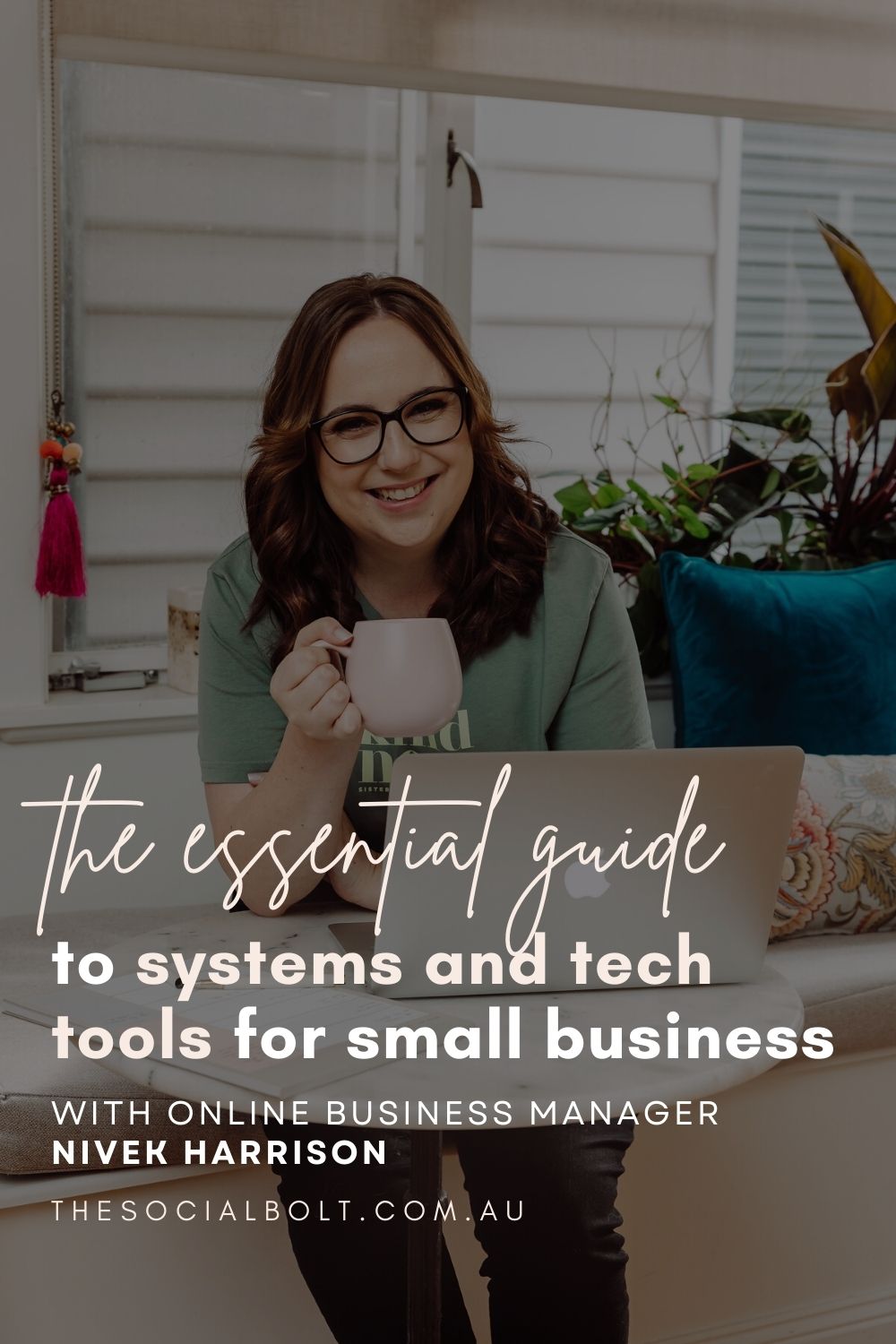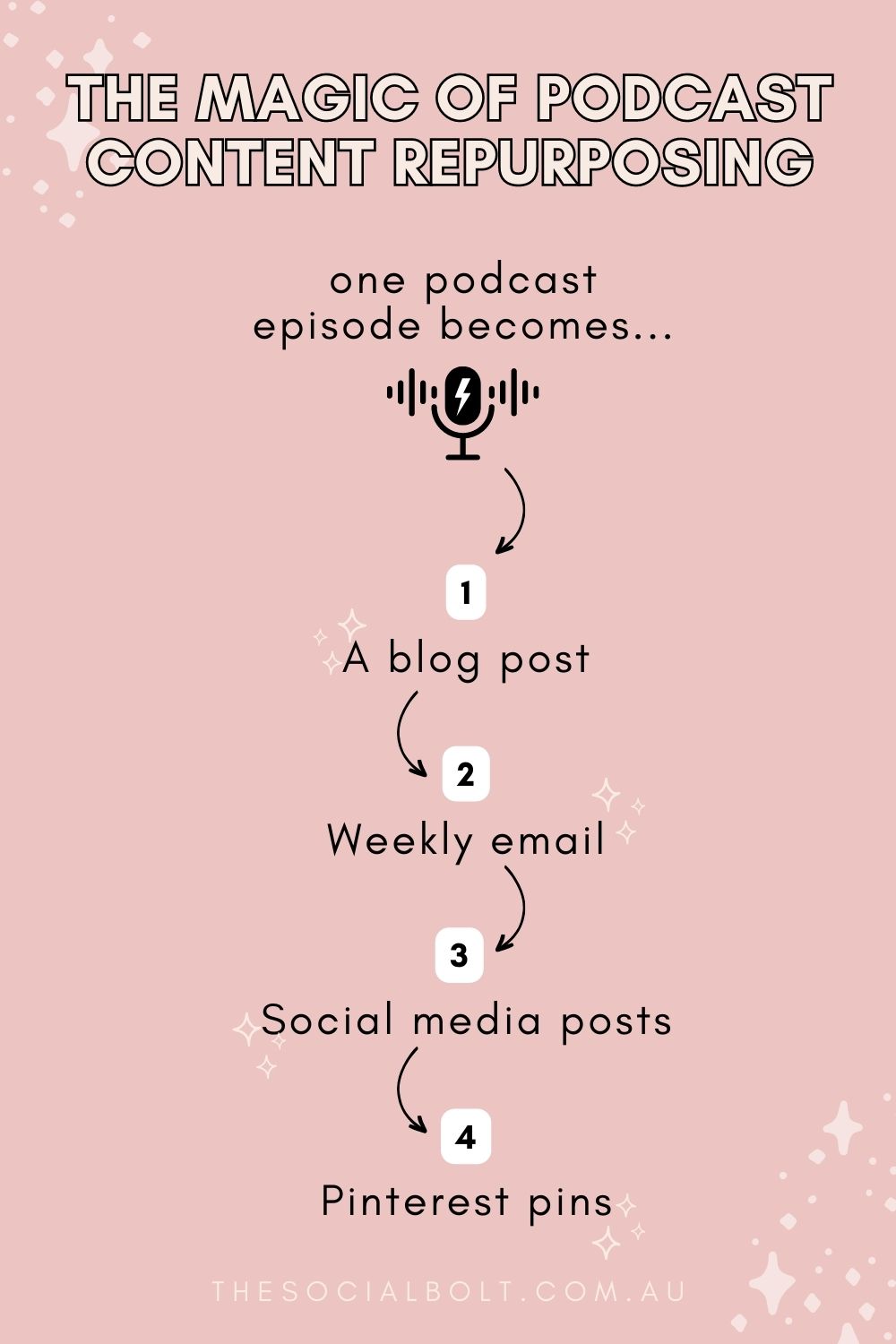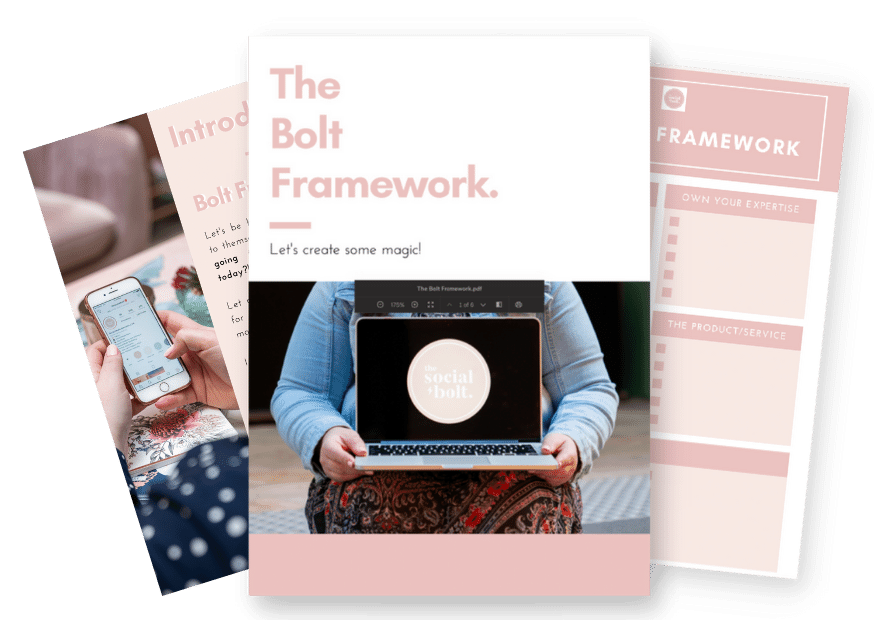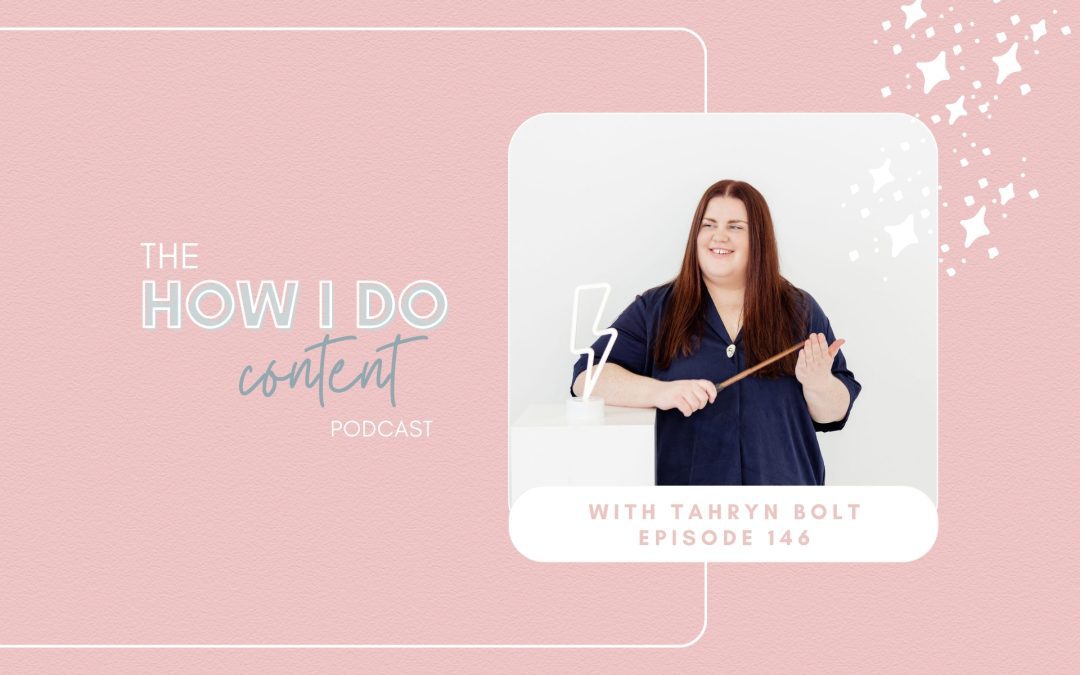When I think about the many 6-figure, multi 6-figure and 7-figure businesses I’ve had the privilege of working with and supporting, there’s something they all have in common… They’ve mastered the art of simplifying and streamlining their business through systems and tech tools so it continues to grow and elevate year after year.
And today’s guest on the How I Do Content Podcast is an expert at supporting these business owners to do this…
![[PINTEREST] HIDC Pins - New (1) (1) The Essential Guide to Systems and Tech Tools for Small Businesses](https://thesocialbolt.com.au/wp-content/uploads/2023/08/PINTEREST-HIDC-Pins-New-1-1.png)
Let me officially introduce you to Nivek Harrison
Nivek is an Online Business Manager and the owner of The Virtual Chapter, a full-service virtual support agency for soul-led coaches, course creators and consultants who want to transform & elevate their businesses through the power of leveraged systems, structures and teams.
After training with the Beautiful You Coaching Academy and building a successful life coaching business, Nivek quickly found her passion in all things technology & people and supporting other entrepreneurs to build their dream businesses.
When she’s not project managing like a boss in Asana, you’ll find her spending time with her young family, reading a book or getting her nerd on with the latest tech news.
Nivek has seen behind the scenes of many of these 6-figure, multi 6-figure and 7-figure businesses and knows what goes into reaching these kinda business milestones.
The secret?
Well, there are 3 areas to consider here – mastering systems, hiring a team, and diversifying your content through podcasting. In this episode, Nivek shares her advice when it comes to these 3 areas so you can also simplify and streamline your business and set yourself up for sustainable success.
Things You’ll Learn in This Episode of How I Do Content
- Why systems + processes are non-negotiable if you want to simplify and streamline your business
- The things you need to know BEFORE you hire a team, and how you can prepare your business for hiring support
- Why you should consider launching a podcast and how you can optimise it for growth
TL;DL version:
For those that may not know, when we talk about systems, we aren’t just talking about the tech. We’re talking about how you make things happen. All the little steps, processes and moving parts that help your business run.
More than likely you already have these but you may not know how they work together or form your overall system. If this is you, then you’re going to love this episode!
3 non-negotiable systems every small business owner needs
There are going to be lots of processes within these three basic systems, depending on your business model but these are the foundations you’re gonna want to have in place.
1. Marketing
This is the process for both finding your ideal clients and helping them find you too! The channels, the messaging, the frequency, the design – all of the things (all the things Ned and I can’t get enough of!)
2. Sales
This is a process for transitioning people to actually paying you for your product or service.
3. Client management
This will look really different for everyone. From the time somebody says yes to working with you through to when they stop working with you, however long that time frame may be – you need a system to streamline the process in between these two points.
Document your systems
Documenting your systems not only helps clarify things for your brain, but it helps you identify areas for improvement, and ways to become more efficient and will make things a helluva lot easier when you grow your team and scale your biz.
This doesn’t have to be fancy. Open a Google Doc and write down every single step that you currently take in your business. Imagine you had to explain to someone else all the things you do currently in your business and go from there. Add comments with future planning or areas you want to tweak. Keeping in mind, a lot of systems for a lot of business owners are going to look pretty simple.
For example:
- Every Monday I do my business bookkeeping, reconcile bank feeds and invoices using Xero
- Branding guidelines + messaging strategy document
- Link to my Canva social media templates
- I try to write a monthly newsletter on MailerLite
- Link to launch email copy
The beauty of this exercise is simply to get it all out of your head! Getting it down on paper (or screen) helps to make space in our brain to rest and/or creativity.
Creativity loves containers
Often the ghosts of corporate’s past emerge when you mention systems to a business owner. We’ve been scarred by our previous experiences of structure, order and inflexibility – which is what led us to hop on the entrepreneurial roller coaster in the first place!
But, sometimes we think we’re going to have alllll this freedom, time and space when we are our own boss. And, as you probably know (well), business is all-consuming when you’re in the driver’s seat. It’s hard to switch off and set boundaries when you’re the one making all the calls. So although the space is great, it can feel super challenging to switch on the inspiration and creativity in the snippets of time we have left in between everything else. Writing down all the moving parts of your business not only clears your brain space but gives us more time for your creativity to flourish.
Your systems are never set in stone.
Just because it’s written down doesn’t mean you can never change your processes. In fact, when it’s been documented we can easily tweak things, instead of starting from scratch every time. For example, having a launch framework means you can rinse, tweak and repeat for every launch. Bye-bye launch burnout!

The systems you need to build a multi 6- or 7-figure business
Working behind the scenes of many multi 6- and 7-figure businesses means Nivek has seen first-hand (and likely implemented) what these businesses do to set themselves up for success.
Simple, streamlined systems are the most impactful
You’d think that the more income, surely the more complex the backend of your business would look, right? Wrong!
The difference is that the high-revenue businesses know what works for them and their business, so they’ve been able to really refine their processes and eliminate anything that isn’t needed. They’ve usually tried and tested different pathways and they’ve become clear on what actually works for them and their business. Often these high-performing businesses outsource different parts of their business, which also gives them a leg-up in streamlining their systems, too.
When to hire a virtual assistant (VA) in your small business
This question is a bit like asking, “how long is a piece of string?”. There’s no predetermined point in business where you suddenly have to hire help, it looks different for everyone. But, there are a few different stages we commonly see business owners looking to outsource.
When you don’t have enough time for your side hustle
These are usually people who are still working in a full-time or part-time capacity but are building a business alongside their stable income. They don’t have the time to work in their business all the time but they do have the funds to outsource early on.
When your work-life balance is totally out of whack
When you’re feeling like you couldn’t possibly fit another task in the running of your business, it’s probably time to get help so you can free up your precious time (and brain space!) to start enjoying your life more.
When there’s a skill gap
This is a common reason for hiring a VA in your business. For example, you may have a podcast but not have the skills to edit your episodes (or the time/inclination to learn them yourself), graphic designers, bookkeepers, web designers… the list goes on!
When to hire an online business manager (OBM) in your business
Unlike a VA, an OBM is better at coming into a business that is already established, knows where its money is coming from and knows its future trajectory. It’s for business owners that are looking to bring on a ‘second brain’ to work alongside them in their CEO role. In order to do this, you have to be solid in what your business is offering and understand your role as CEO of your business.
You most often see an OBM coming into a business post the first 6-figures, or seeing consistent 6-figure (or multi 6-figure) years. Your OBM is someone who you can deeply trust to care about your business, step in when you have time off and take care of things on your behalf.
Tips for getting ready to hire your first team member in your business
Time track your business tasks
Document where you’re actually spending time in your business and how you feel about where you’re spending that time. For example, 2 hours spent creating graphics in Canva and totally hated it (Bingo – may be worth outsourcing that). There are tools like Toggl that you can use to time track via your browser, or an old-fashioned pen and paper works well too!
When you’re specific about WHAT you actually need help with, you’re more likely to find the right person to help with the job.
Document your processes
Make sure you’ve got at least the first few tasks documented, ready to hand over to your new contractor. Loom screen recordings are an awesome resource for documenting processes, without needing to type the whole lot out.
Know your financials
Knowing your numbers and projecting what it would look like having a team member on your books for the next 6 months will help you decide whether a) you can afford it and b) ease financial worries in the future. You can really lean into having someone there to help you, without stressing about how much it’s costing you.
Be realistic in your expectations
I hate to break it to you but finding a VA who is highly skilled at every single task you need and comes well under budget, just ain’t gonna happen. This is where knowing exactly what you need help with is handy – you can find a VA who’s perfect for the specific tasks you need help with instead of trying to find a unicorn.
Hire from a place of integrity
Don’t be that person who hires an offshore VA just because they charge a pittance (which can be below their liveable or minimum wage). Just don’t.
Communication is key when growing your team
Take the time in the onboarding stage to educate your new team member about who you are, what your goals are and what you need help with. It’s always better to err on the side of over-communication rather than potential under-communication, especially in the early days.
Continue to communicate where you’re at throughout your business journey to help your team members to feel invested in your business. Open communication channels also mean your team will be able to share from their place of expertise about different approaches or more efficient ways for certain tasks. It’s important to remember that the magic of support in your business doesn’t often happen in the first 90 days. Fast forward 12 months, 5 years – you’ll truly feel the benefits of being well-supported in your business.

Why you should start a podcast for your small business
Podcast listeners will buy your stuff
Podcasting is one of the fastest-growing platforms, especially for long-form content. And people who listen to podcasts are more likely to BUY recommended products or services compared to people who saw the same recommendation on social media.
You can repurpose the heck out of podcast content
You know how much we love content repurposing around here, and you can repurpose one podcast into over 20 pieces of individual content! The same can’t be said when your primary focus is creating one post for Instagram or Facebook. Repurposing your content is hugely time-saving when you’re already doing 101 other things in the running of your business!
How to maximise and repurpose your podcast
Get clear on your marketing strategy and identify any gaps or marketing platforms you want to be more consistent with. You can then use your podcast to create specific content for these channels.
For example:
- Email marketing- creating an email to go out with a preview of your podcast episodes.
- Instagram – 2 posts per podcast episode per week repurposed to socials
- Website – a weekly podcast blog
Look for ways to outsource your podcast repurposing
Once you know how you can repurpose your podcast content, see whether you could outsource some of these tasks, so you aren’t adding to your workload.
For example, one episode of the How I Do Content Podcast becomes:
- A weekly email
- One or two social media posts
- 3 Pinterest pins
- A blog (hi, if you’re new here – welcome)
… And the best part is that this helps with consistency, which we know is the bottom line for a good marketing strategy!
Use your podcast to serve your sales cycle
Planning your podcast ahead of time means you can create specific podcast episodes to support and serve any upcoming important business dates like launches or events.
AI helps with content ideation and creation
There’s nothing more soul-sapping than opening a blank Google Doc when you need inspiration to create content. AI is a fantastic tool for developing ideas for podcast topics and other content. As with anything, it’s good to use it to support your overall content strategy, not in place of it.
Nivek’s current fave AI tools
Reclaim – AI scheduling tool
This means you can put in a bunch of recurring tasks and it fits it in around whatever else is going on in your calendar. So good for time blocking – especially with client work!
Cast Magic – AI Podcasting tool
A platform that transcribes your podcast episodes and repurposes it into content for other platforms. It can even create quotes from you or your interview guests.
ChatGPT for meal planning
For anyone who HATES planning meals each and every week (why does it never end!?) Chuck your family’s favourite meals on a spreadsheet and upload to ChatGPT. Let it be the one to plan your meals for the week. Hurrah!
Nivek’s top 5 ride-or-die tech tools for small business
We wanted to know just what apps/software or tools an OBM extraordinaire uses and recommends…
1. Asana
An online project management platform, you would have to pry Asana from Nivek’s cold, dead hands. She will never change. Not for anyone.
2. Slack
A communication channel that especially makes group conversations easier.
3. Airtable
Like a spreadsheet on steroids – complete with pretty colours and super user-friendly interface.
4. Zapier
Task and tech automation tool. So good for increasing efficiency and streamlining processes.
5. Cast Magic
Podcasting tool. Yes, we know it was already mentioned but it’s so good it gets an encore.
![[PINTEREST] HIDC Pins - New (2) The Essential Guide to Systems and Tech Tools for Small Businesses](https://thesocialbolt.com.au/wp-content/uploads/2023/08/PINTEREST-HIDC-Pins-New-2.png)
Connect with Nivek Harrison
- Follow Nivek on Instagram at https://www.instagram.com/thevirtualchapter/
- Listen to the Virtual Chapter Podcast at https://thevirtualchapter.buzzsprout.com/
- Download the FREEBIE “70 tasks a Virtual Assistant can do for your coaching business” at https://thevirtualchapter.co/tasks
Want More?
⚡️ Instagram: @thesocialbolt
⚡️ Take the quiz! Discover Your Unique Blend of Content Magic here
⚡️ Get my DIY Content Wizard Bundle to help you with strategic content creation for your heart led business here

![[WEBSITE] Blog Cover Images 5 ways to make 2023 easier (and generate more cash)](https://thesocialbolt.com.au/wp-content/uploads/2023/08/WEBSITE-Blog-Cover-Images-1-2.png)





